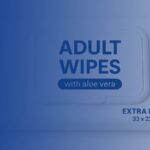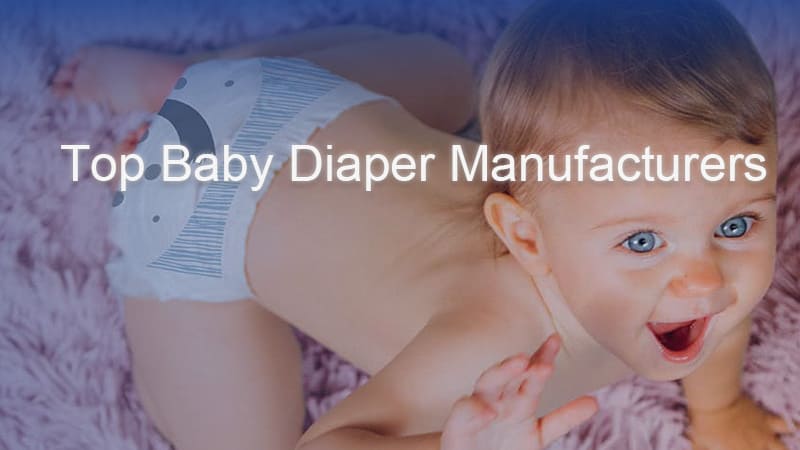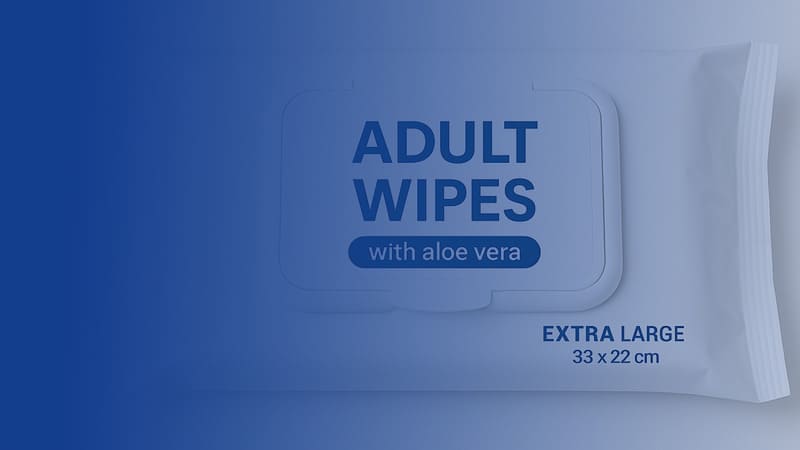
¿Cuál es la diferencia entre las toallitas estándar GD4 e IWSFG?
marzo 26, 2025
Top 5 fabricantes de toallitas para adultos
septiembre 12, 2025When it comes to launching a baby wipes brand, regulatory compliance is not just a formality—it's a legal requirement and a vital trust signal for parents. Baby wipes are applied to a baby’s delicate skin, so governments enforce strict safety, labeling, and manufacturing standards. In this blog, we’ll break down everything you need to know about Regulatory Compliance for Baby Wipes, based on your target markets.
🧼 Why Regulatory Compliance Matters
Baby wipes fall under different categories depending on their formulation and claims:
-
Cosmetic products – Most water-based baby wipes for cleaning skin.
-
Medical devices – If the wipes claim to treat or prevent skin conditions (e.g., diaper rash).
-
Biocidal products – If they include disinfectants or claim antibacterial properties.
Each classification has its own regulatory path. Failing to comply can result in product recalls, fines, or even bans from selling in certain markets.
🌍 1. EU Compliance – Cosmetic Regulation (EC) No 1223/2009
If your baby wipes are sold in Europe and are considered cosmetics (e.g., cleansing wipes for skin), you must:
✅ Product Information File (PIF)
You must compile and maintain a PIF, including:
-
Full ingredient list with INCI names
-
Safety assessment by a qualified toxicologist
-
Microbiological and stability test reports
-
GMP (Good Manufacturing Practice) documentation
-
Label with warnings and usage instructions
✅ CPNP Notification
All cosmetic products must be registered on the CPNP (Cosmetic Products Notification Portal) before being sold.
✅ Claims Substantiation
Any claims like “hypoallergenic,” “gentle on skin,” or “fragrance-free” must be backed by data (e.g., clinical tests or dermatological evaluations).
🇺🇸 2. USA Compliance – FDA & FTC Guidelines (Expanded)
In the United States, baby wipes are regulated based on their intended use. If your product is marketed purely for cleansing the skin, it is typically considered a cosmetic. However, if your product claims to kill bacteria or treat diaper rash, it may be classified as an OTC drug or medical device, que requiere un proceso de aprobación diferente y más riguroso.
✨ A. Toallitas cosméticas para bebés (caso más común)
Estas son toallitas utilizadas para limpiar la piel de un bebé, especialmente durante los cambios de pañales. Los requisitos de cumplimiento incluyen:
Seguridad de ingredientes
-
Solo ingredientes reconocidos como seguro para uso cosmético puede ser incluido.
-
Evite sustancias restringidas o prohibidas enumeradas por el FDA, como compuestos de mercurio o liberadores de formaldehído.
Requisitos de etiquetado (21 CFR 701)
-
Identidad del producto (por ejemplo, "Toallitas de limpieza para bebés")
-
Contenido neto en unidades de EE. UU. Y métricas
-
Lista de ingredientes en formato inci
-
Nombre y dirección del fabricante/distribuidor
-
Instrucciones y advertencias si corresponde
Supervisión de reclamos
-
No puede implicar un beneficio terapéutico a menos que se registre como un medicamento.
-
Reclamos como "hipoalergénico", "probado en dermatólogo" o "biodegradable" deben ser confustiado.
Cumplimiento de GMP
-
Si bien el registro cosmético no es obligatorio, siguiendo GMP es esencial. La FDA puede inspeccionar y emitir cartas de advertencia para el incumplimiento.
✨ B. Si sus toallitas son drogas (OTC) o antibacterianas
Si hace reclamos como:
-
"Mata al 99.9% de las bacterias"
-
"Desinfectando toallitas para las manos de bebé"
-
"Trata/evita la erupción de pañales"
Entonces tus toallitas se clasifican como Drogas de venta libre (OTC), y debes:
-
Registre la instalación con el Registro de establecimiento de drogas de la FDA
-
Lista bajo apropiado Monografía de la FDA
-
Incluir un Hechos de drogas panel
-
Conducta prueba clínica Para demostrar la eficacia y la seguridad
Estos requisitos aumentan significativamente el tiempo y el costo.
🇬🇧 3. UK Compliance – UK Cosmetics Regulation (Expanded)
Después del Brexit, el Reino Unido estableció su propio marco de regulación cosmética, reflejando en gran medida la regulación de la UE (EC) No 1223/2009 pero con diferencias clave.
✨ A. Clasificación como cosmética
Las toallitas para bebés en el Reino Unido se clasifican como productos cosméticos si su función principal es limpia y no llevan reclamos medicinales.
✨ B. Reino Unido Persona responsable (Reino Unido RP)
Antes de colocar un producto en el mercado del Reino Unido, debe nombrar un Persona responsable del Reino Unido (RP). Esta persona o entidad es legalmente responsable de:
-
Garantizar el cumplimiento de las regulaciones
-
Mantener el archivo de información del producto (PIF)
-
Manejo de procesos de seguridad y retiro
Si está fuera del Reino Unido, su importador o empresa de cumplimiento puede servir como RP.
✨ Notificación de C. SCPN
Los productos deben estar registrados a través del Enviar notificación de producto cosmético (SCPN) Portal antes de la venta en Gran Bretaña (Inglaterra, Escocia, Gales). Detalles requeridos:
-
Nombre y tipo de producto
-
Contacto RP
-
Ingredientes inci con porcentajes
-
Función de producto e imágenes de etiquetas
Nota: Irlanda del Norte Todavía sigue I reglas de cpnp.
✨ D. Requisitos de embalaje y etiquetado
Las etiquetas del Reino Unido deben incluir:
-
Nombre y función del producto
-
Lista de ingredientes (INCI)
-
Número de lotes
-
Nombre del fabricante/RP y dirección del Reino Unido
-
Contenido neto
-
Fecha de vencimiento o período después de la apertura (PAO)
-
Advertencias y instrucciones de uso
✨ E. reclamos y pruebas
Las reclamaciones deben ser:
-
Sincero y no engañoso
-
Supported by data (e.g., RIPT for "hypoallergenic")
-
Las reclamaciones ambientales como "biodegradable" pueden requerir la certificación de terceros (por ejemplo, compost ok)
🌐 4. Asia-Pacific & Middle East Compliance (Brief Overview)
ASEAN Countries (e.g., Malaysia, Indonesia, Thailand)
-
Follow the ASEAN Cosmetic Directive
-
Notify the Ministry of Health
-
Appoint local Responsible Person or importer
GCC Countries (e.g., UAE, Saudi Arabia)
-
Register with GSO or local authorities
-
Arabic labeling often mandatory
-
Pre-approval needed for marketing and claims
🔍 Testing and Documentation Checklist
-
Dermatological safety test
-
Patch test (HRIPT or RIPT)
-
Microbial limit test (TPC, yeast/mold)
-
Preservative efficacy test (Challenge Test)
-
Stability testing (under varied temp/humidity)
-
Document GMP compliance
✅ Best Practices for Staying Compliant
-
Partner with an experienced OEM manufacturer certified with ISO 22716, ISO 13485, or FDA GMP
-
Use a regulatory consultant when selling in multiple markets
-
Update your PIF and labels with every formula or packaging change
📅 Conclusion
Bringing baby wipes to market is not just about packaging and price—regulatory compliance ensures safety, trust, and long-term brand reputation. Investing in proper testing, documentation, and regulatory processes protects your business and ensures that babies everywhere receive the safe care they deserve.
Looking for a compliant OEM baby wipes manufacturer? Contáctenos hoy—we help brands meet all regulatory requirements from formula to packaging.
- Toallitas de agua
- Tailandia
- Etiqueta privada
- toallitas para mascotas
- OEM
- Fabricantes
- Toallitas Desmaquillantes
- Toallitas de cocina
- Toallitas íntimas
- Toallitas desechables
- Toallitas desinfectantes
- fabricante de pañales
- Toallitas refrescantes
- Toallitas corporales
- Toallitas para bebé
- pañales para bebés
- toallitas para adultos
- Toallita para adultos
Categorías de toallitas húmedas:
Tipo de embalaje:
¿Tengo una pregunta?
Si tiene alguna pregunta, no dude en enviarnos un mensaje. Respondemos dentro de 8 horas !





